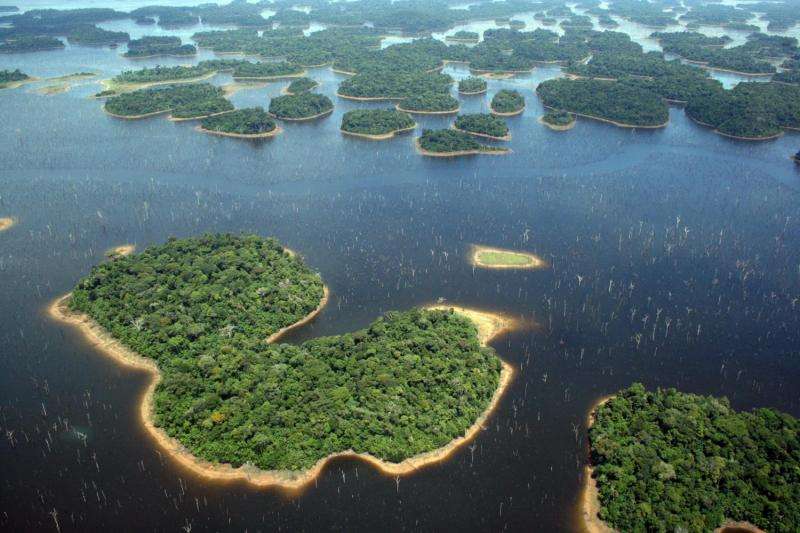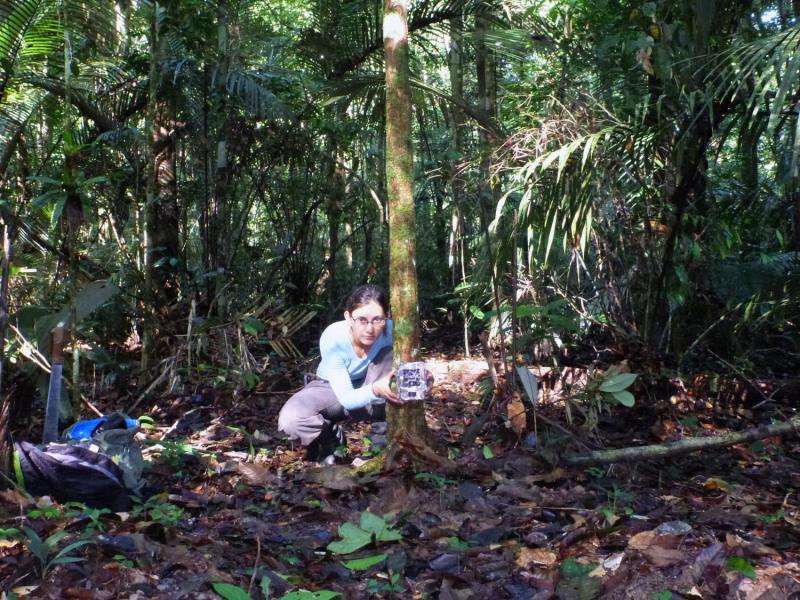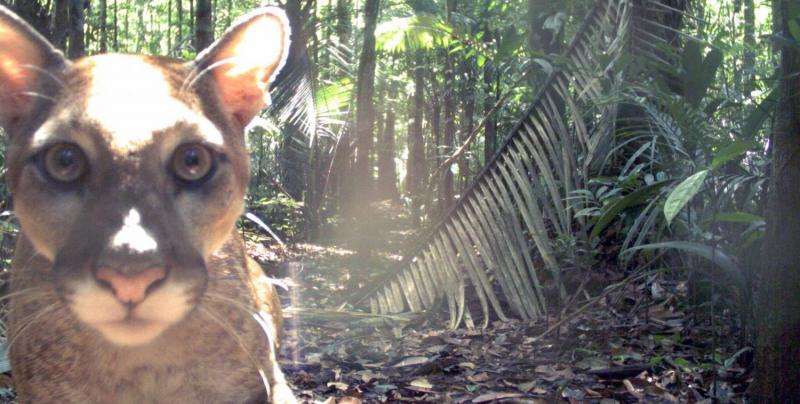Hydroelectric dams drastically reduce tropical forest biodiversity

It reveals a loss of mammals, birds and tortoises from the vast majority of islands formed by the creation of the Balbina Lake. Credit: Eduardo M. Venticinque
Widely hailed as 'green' sources of renewable energy, hydroelectric dams have been built worldwide at an unprecedented scale. But research from the University of East Anglia reveals that these major infrastructure projects are far from environmentally friendly.
A study published today in PLOS ONE reveals the drastic effects of the major Amazonian Balbina Dam on tropical rainforest biodiversity.
The research reveals a loss of mammals, birds and tortoises from the vast majority of islands formed by the creation of the vast Balbina Lake, one of the world's largest hydroelectric reservoirs.
Lead author Dr Maíra Benchimol, a former PhD student at UEA and now at Universidade Estadual de Santa Cruz, Bahia, Brazil, said: "Hydroelectric dams have been thought to be an environmentally friendly source of renewable power - and in recent years they have been built to supply the burgeoning energy demands of emergent tropical countries.
"Previous studies have shown that large dams result in severe losses in fishery revenues, increases in greenhouse gas emissions, and socioeconomic costs to local communities. Our research adds evidence that forest biodiversity also pays a heavy price when large dams are built.
Prof Carlos Peres, from UEA's School of Environmental Sciences, said: "Of course, it is widely known that dams cause massive population losses in terrestrial and tree-dwelling species within lowland forest areas that are flooded. However, we're only beginning to realize the staggering extent of extinctions in forest areas that remain above water as habitat islands.

It reveals a loss of mammals, birds and tortoises from the vast majority of islands formed by the creation of the Balbina Lake. Credit: Eduardo M. Venticinque
"The Brazilian government is currently planning to build hundreds of new dams in some of the world's most biodiverse tropical forest regions. But the high biodiversity costs of mega dams should be carefully weighed against any benefits of hydropower production."
The Balbina Dam in the Central Brazilian Amazon is one of the world's largest hydroelectric dams in terms of total flooded area. The creation of this dam saw a formerly unbroken landscape of undisturbed continuous forest converted into an artificial archipelago of 3,546 islands.
The research team carried out intensive biodiversity surveys over two years on 37 islands isolated by the hydroelectric reservoir and three neighbouring continuous forest areas. They also surveyed land and tree dwelling vertebrates at these 40 forest sites.
Further research focused on plants and used high-resolution satellite images to better understand the level of forest degradation on the islands.
Key findings:
- Clear evidence of widespread loss of animals on forest islands following 26 years of isolation, even under the best-case protection scenario ensured by the largest biological reserve in Brazil.
- Large vertebrates including mammals, large gamebirds and tortoises disappeared from most islands formed by the creation of the Balbina Lake.
- Of the 3,546 islands created, only 25 are now likely to harbour at least four fifths of all 35 target species surveyed in the study.
- Island size was the most important factor predicting the number of forest vertebrate species retained.

Dr Benchimol said: "We found that only a few islands larger than 475 hectares still contained a diverse community of animal and bird species, which corresponds to only 0.7 per cent of all islands in the reservoir."
"In addition to the effects of area reduction, most small islands succumbed to wind exposure and ephemeral fires that occurred during a severe El Niño drought in 1997-98. Post-burn islands retained even fewer wildlife species than islands of similar size that had not been affected by wildfires."
In another study published last month in Journal of Ecology the authors showed that fires on these small islands have a knock-on effect for animal life, with extinction rates accelerated by the reduction of habitable forest.
Dr Benchimol said: "Different wildlife species respond differently depending on their lifestyles. Those that need small home ranges coped better with forest habitat loss caused by the dam. Nevertheless, the future demographic and genetic viability of small isolated populations in areas affected by major dams seems bleak, as few species are able to maintain gene flow by swimming long distances to reach other islands."
Prof Peres said: "We predicted an overall local extinction rate of more than 70 per cent of the 124,110 wildlife populations of the species we studied occurring in all 3,546 islands across the entire archipelago. We're shedding new light into the devastating impacts of large infrastructure projects on tropical forest biodiversity, which should be considered in any Environmental Impact Assessments of new hydroelectric dams."
More information: 'Widespread forest vertebrate extinctions induced by a mega hydroelectric dam in lowland Amazonia' is published in the journal PLOS ONE on July 1, 2015.
Journal information: PLoS ONE , Journal of Ecology
Provided by University of East Anglia




















